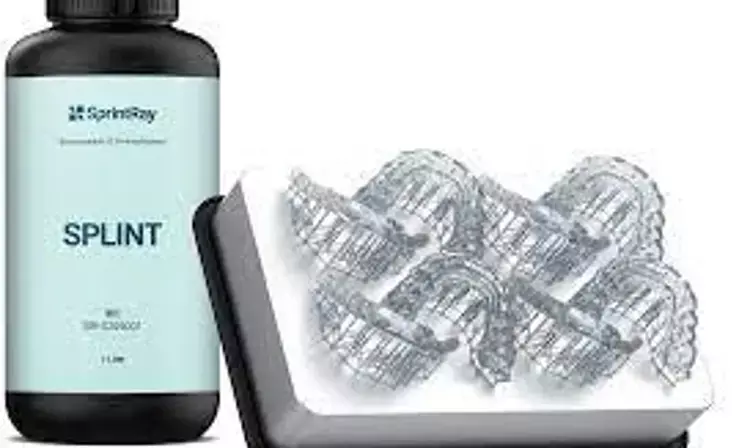- Home
- Medical news & Guidelines
- Anesthesiology
- Cardiology and CTVS
- Critical Care
- Dentistry
- Dermatology
- Diabetes and Endocrinology
- ENT
- Gastroenterology
- Medicine
- Nephrology
- Neurology
- Obstretics-Gynaecology
- Oncology
- Ophthalmology
- Orthopaedics
- Pediatrics-Neonatology
- Psychiatry
- Pulmonology
- Radiology
- Surgery
- Urology
- Laboratory Medicine
- Diet
- Nursing
- Paramedical
- Physiotherapy
- Health news
- Fact Check
- Bone Health Fact Check
- Brain Health Fact Check
- Cancer Related Fact Check
- Child Care Fact Check
- Dental and oral health fact check
- Diabetes and metabolic health fact check
- Diet and Nutrition Fact Check
- Eye and ENT Care Fact Check
- Fitness fact check
- Gut health fact check
- Heart health fact check
- Kidney health fact check
- Medical education fact check
- Men's health fact check
- Respiratory fact check
- Skin and hair care fact check
- Vaccine and Immunization fact check
- Women's health fact check
- AYUSH
- State News
- Andaman and Nicobar Islands
- Andhra Pradesh
- Arunachal Pradesh
- Assam
- Bihar
- Chandigarh
- Chattisgarh
- Dadra and Nagar Haveli
- Daman and Diu
- Delhi
- Goa
- Gujarat
- Haryana
- Himachal Pradesh
- Jammu & Kashmir
- Jharkhand
- Karnataka
- Kerala
- Ladakh
- Lakshadweep
- Madhya Pradesh
- Maharashtra
- Manipur
- Meghalaya
- Mizoram
- Nagaland
- Odisha
- Puducherry
- Punjab
- Rajasthan
- Sikkim
- Tamil Nadu
- Telangana
- Tripura
- Uttar Pradesh
- Uttrakhand
- West Bengal
- Medical Education
- Industry
Washing and polymerisation reduce cytotoxicity of printed splits during additive manufacturing

Materials, washing and post-polymerization should be matched while printing splints to reduce cytotoxic effects during additive manufacturing, according to a recent study published in the Journal of Dentistry.
Printed splints may be an alternative as a treatment of functional disorders in addition to physical, manual and physiological therapeutics. The objective is to investigate whether different 3D printed splint materials, which are fabricated with different fabrication orientations and post-processing (washing and post polymerisation) exhibit different in vitro cytotoxicity.
600 discs (n = 25 per group, 5mmx1mm) were printed (P30+ DLP-printer, Straumann, CH; 100 µm layer) from splint materials (M1: Luxaprint OrthoPlus, DMG, G; M2: V-Print Splint, Voco, G). Printing was performed under 90° (A1), 45° (A2) or 0° (A3) alignment to the building platform. Specimens were either automatically washed (W1) (Straumann P Wash, Straumann, CH) or manually cleaned (W2) (Voco Pre-/Main-Clean protocol, Voco, G), and post-polymerization was performed (P1: Cure, Straumann, CH; P2: Otoflash N171, Ernst Hinrichs Dental, G). RAW264.7 mouse macrophages were exposed to extracts of the specimens and cytotoxicity was determined as cell survival using a crystal violet assay. Optical density values obtained from exposed cell cultures were normalized to untreated controls (100%), summarized as means and statistically analyzed (ANOVA, α=0.05).
Results:
Cell survival varied between 9.1+/-1.3% (alignment A2/post-cure P2/material M2/wash system W2) and 58.5+/-5.9% (alignment A1/post-cure P1/material M1/wash system W1). Univariate analysis of variance revealed significant differences between mean values for post-cure (p = 0.000), wash system (p = 0.002) and materials (p = 0.000), but not for the alignment (p = 0.406). With standardised washing and adapted post-cure, both tested materials provided the lowest cytotoxicity even in all three printing alignments.
Thus, the selection of the material, as well as the post-processing (post-polymerization, washing procedure), show an influence on the in vitro cytotoxicity. Alignment during manufacturing does not affect toxicity.
Reference:
Cytotoxicity of printed resin-based splint materials by Johann Wulff et al. published in the Journal of Dentistry.
https://www.sciencedirect.com/science/article/abs/pii/S0300571222001543
Keywords:
Cytotoxicity, printed splints, resin-based, resin-based splint materials, Journal of Dentistry, Johann Wulff, Helmut Schweikl, Martin Rosentritt, Splint materials, Printing conditions, Additive manufacturing, Cell survival
Dr. Shravani Dali has completed her BDS from Pravara institute of medical sciences, loni. Following which she extensively worked in the healthcare sector for 2+ years. She has been actively involved in writing blogs in field of health and wellness. Currently she is pursuing her Masters of public health-health administration from Tata institute of social sciences. She can be contacted at editorial@medicaldialogues.in.
Dr Kamal Kant Kohli-MBBS, DTCD- a chest specialist with more than 30 years of practice and a flair for writing clinical articles, Dr Kamal Kant Kohli joined Medical Dialogues as a Chief Editor of Medical News. Besides writing articles, as an editor, he proofreads and verifies all the medical content published on Medical Dialogues including those coming from journals, studies,medical conferences,guidelines etc. Email: drkohli@medicaldialogues.in. Contact no. 011-43720751


